UC Gardening Blogs
When Queen Bees Get Permanents: Calendar That!
"Drones are male bees that contribute only in the perm production for the queen." So wrote an...
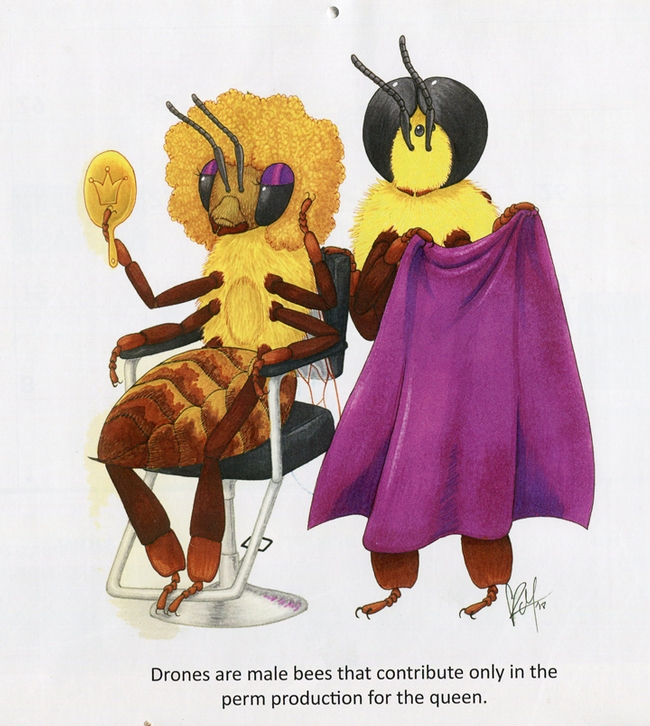
A UC Davis student wrote: "Drones are male bees that contribute only in the perm production for the queen." That inspired Karissa Merritt to create this for the newly published Bohart Museum of Entomology calendar, now available for purchase.
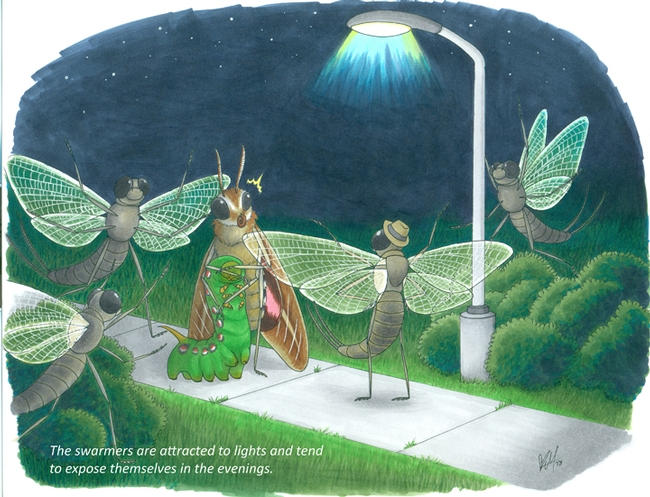
“The swarmers are attracted to lights and tend to expose themselves in the evenings," a UC Davis student wrote about mayflies. The result: this illustration by Karissa Merritt for the Bohart Museum of Entomology's innovative calendar.
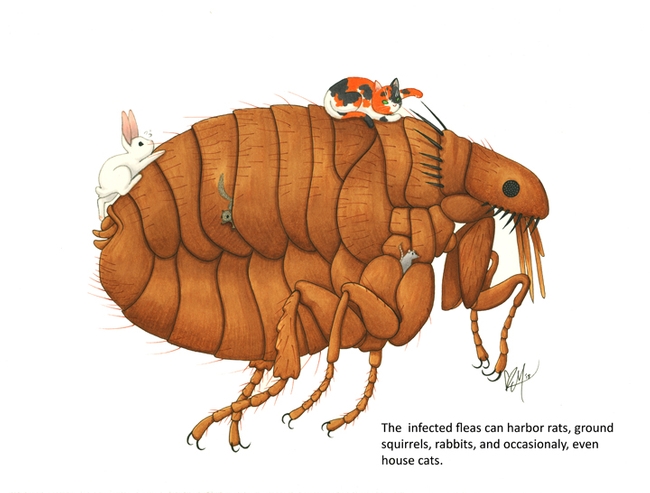
"The infected fleas can harbor rats, ground squirrels, rabbits, and occasionally, even house cats," wrote a UC Davis student. The result: this illustration by Karissa Merritt for the Bohart Museum of Entomology calendar.
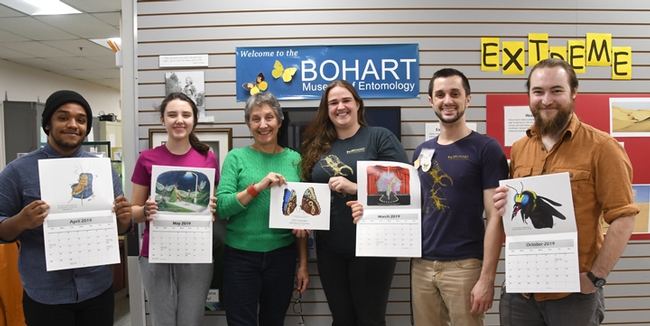
Displaying the innovative Bohart Museum calendars are museum associates and the director. From left are UC Davis entomology student Abram Estrada; intern Sophia Lonchar of The Met High School, Sacramento; Bohart Museum director Lynn Kimsey; UC Davis entomology student Wade Spencer, and Bohart scientist Brennen Dyer, a recent entomology graduate. (Photo by Kathy Keatley Garvey)
Scientists Reveal New Method to Characterize Physiological Responses to Parasitism
Have you ever seen a wasp oviposit or lay its eggs inside a caterpillar? Or the egg of a moth? it's...
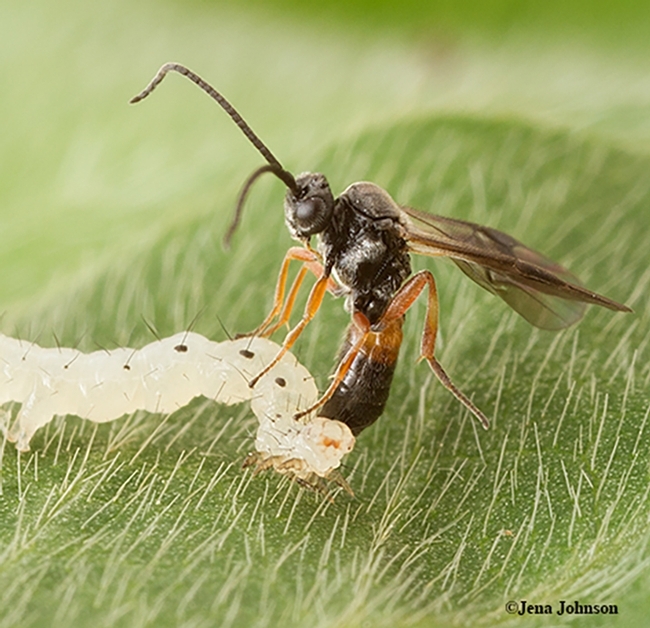
A parasitic wasp, Microplitis demolitor, laying an egg (ovipositing) in larva of soybean looper moth. (Photo by Jena Johnson of the Michael Strand lab, University of Georgia)
About That Three-Cornered Alfalfa Hopper...
It's green, it's tiny, and everyone is hoping it doesn't wreak any havoc in the vineyards. "It" is...
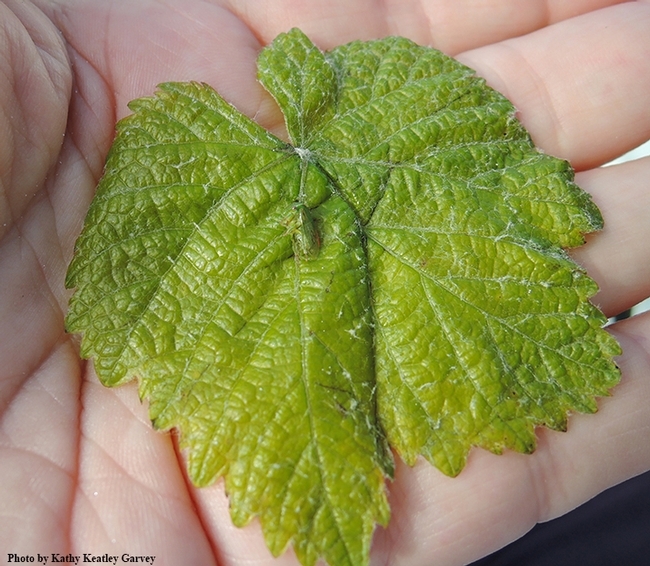
The three-cornered alfalfa hopper, Spissistilus festinus. (Photo by Kathy Keatley Garvey)
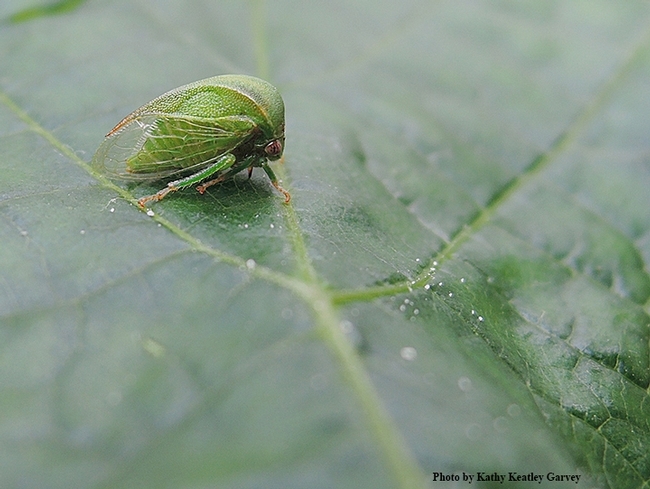
The three-cornered alfalfa hopper, Spissistilus festinus, is a clear-winged, wedge-shaped (thus the name "three-cornered") insect that's about a quarter of an inch long. (Photo by Kathy Keatley Garvey)
Shedding New Light on Honey Bee Chromosomes
Honey bee geneticists with long ties to UC Davis are putting together those missing pieces of the...
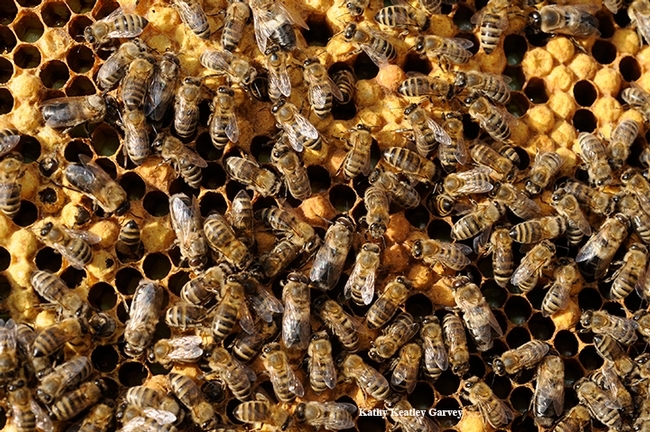
"The honey bee genome,” Robert Page Jr. explained, “is composed of about 15,000 genes, each of which operates within a complex network of genes, doing its small, or large, share of work in building the bee, keeping its internal functions operating, or helping it function and behave in its environment. (Photo by Kathy Keatley Garvey)
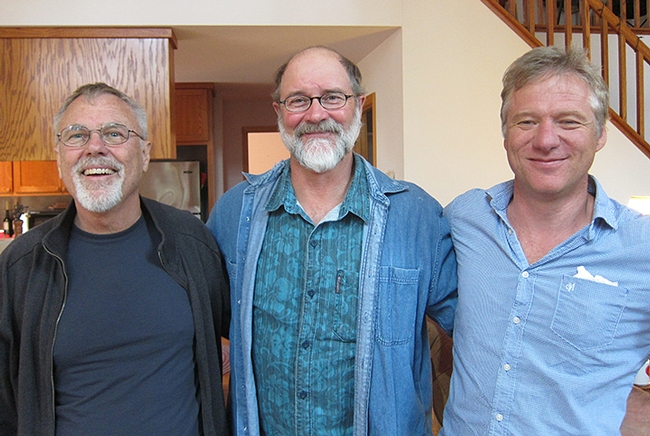
Honey bee geneticist Robert Page Jr. (left) with colleagues: bee breeder-geneticist Kim Fondrk of UC Davis, and Martin Beye, former postdoctoral fellow in the Page lab and now a professor at the University of Düsseldorf, Germany.
The Sad State of the Overwintering Monarch Population in California
Where are all the overwintering monarchs? If you traveled to the Natural Bridges State Park in...
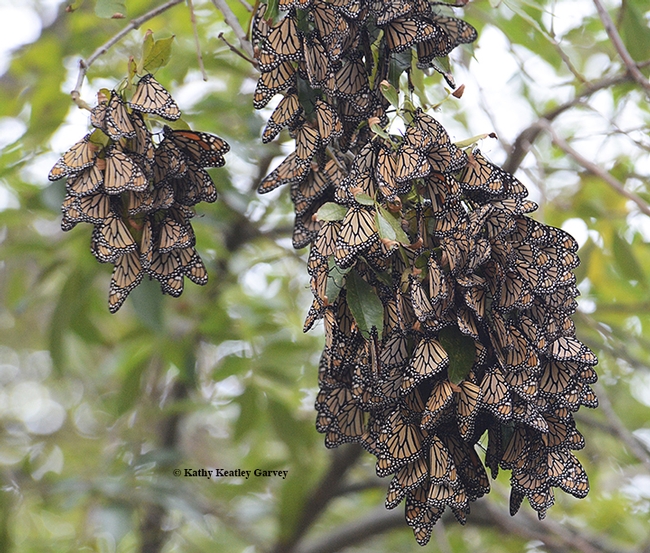
Overwintering monarchs in the Berkeley Aquatic Park on Nov. 26, 2015. (Photo by Kathy Keatley Garvey)
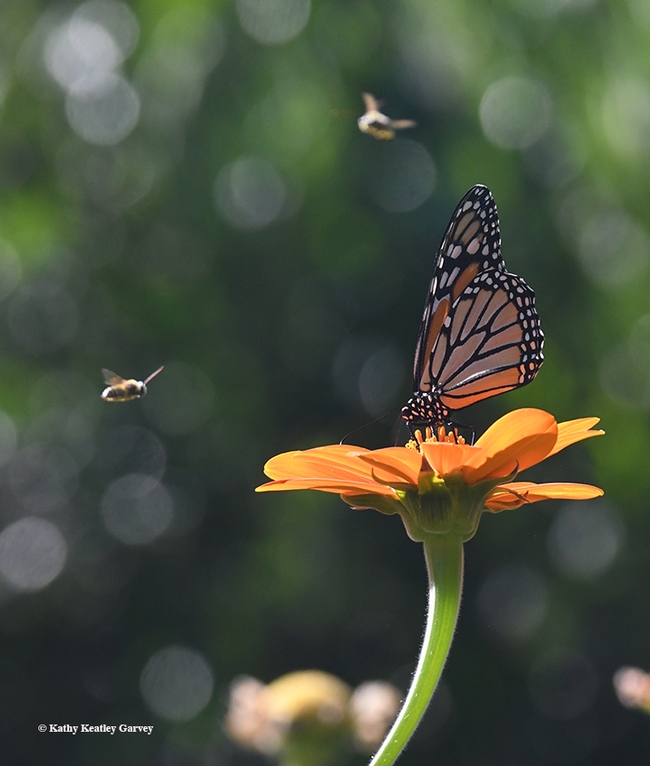
Native bees buzz a monarch sipping on Tithonia in Vacaville, Calif. Nov. 14, 2016. (Photo by Kathy Keatley Garvey)



